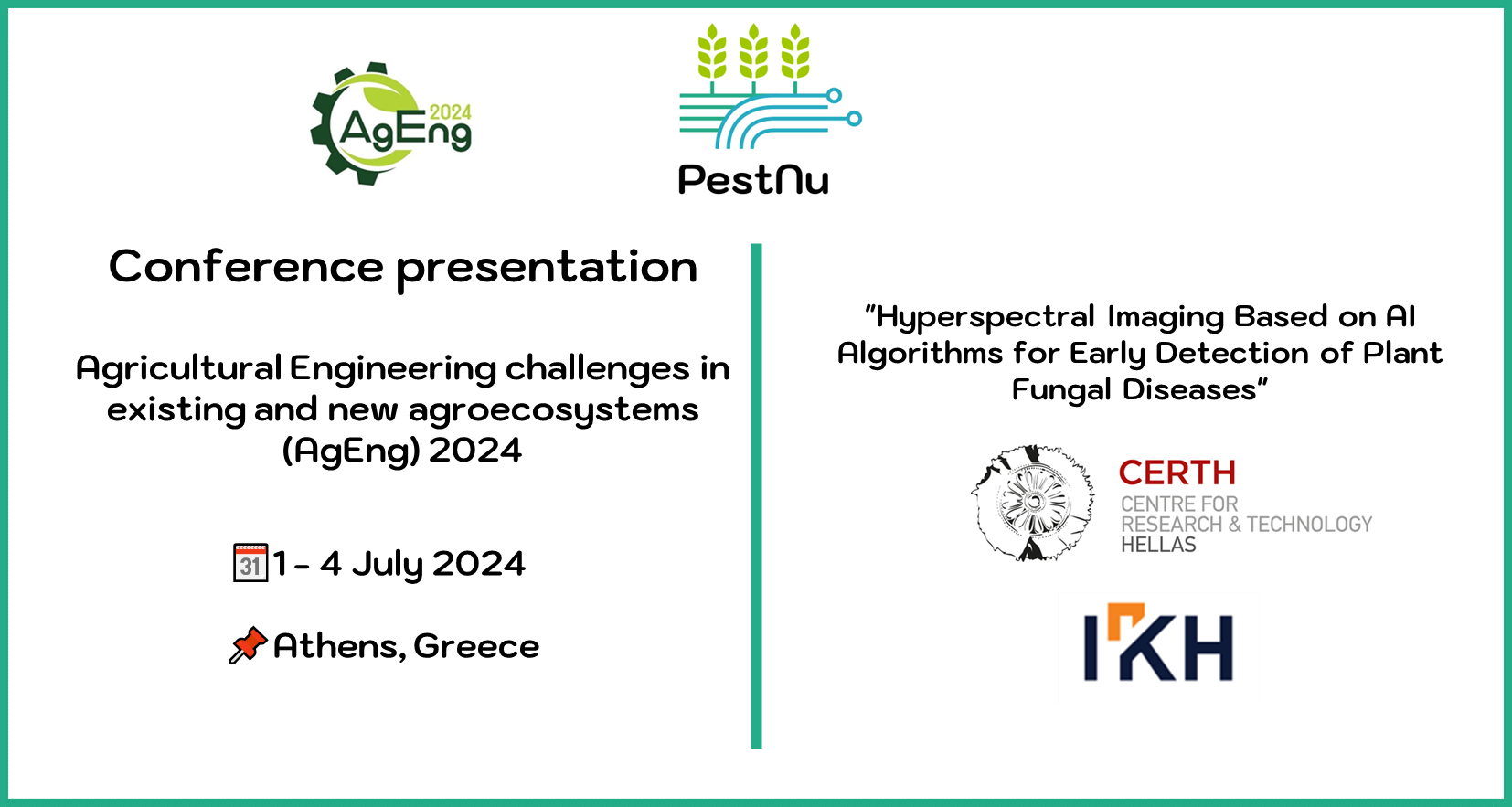CERTH and iKnowHow have made a significant contribution to the upcoming “Agricultural Engineering challenges in existing and new agroecosystems (AgEng) 2024” Conference. The conference will take place on July 1-4, 2024, in Athens, Greece.
The publication, titled “Hyperspectral Imaging Based on AI Algorithms for Early Detection of Plant Fungal Diseases”, will be presented as a poster during the conference, on July 3rd. More information about this conference can be found on this link: Agricultural Engineering challenges in existing and new agroecosystems (eventsair.com)
The authors of the publication are: P. Christakakis, N. Giakoumoglou, C. Klaridopoulos, E. Kalogeropoulou, D. Tzovaras, E. M. Pechlivani
The abstract and the keywords are the following:
In agriculture, timely intervention of crop pathogens is crucial, as fungal pathogens worldwide cause significant crop losses worth $100-$200 billion annually. To mitigate such substantial economic losses, Artificial Intelligence (AI) plays a vital role in early detection process. Currently, potential infections are visually detected and confirmed through laborious laboratory analyses. Early detection is crucial not only for the rapid disease control strategies but also to minimize impacts on crop production and the environment. This study aims to detect grey mould caused by Botrytis cinerea on cucumber plants, early by integrating Deep Learning (DL) techniques and multispectral imaging. Cucumber leaves were artificially inoculated with B. cinerea and employing multispectral imaging in the initial days post-inoculation, a dataset was created for diverse DL models. Both classification and object detection techniques were employed, demonstrating remarkable accuracy. The best-performing classification model achieved 0.93 accuracy and 0.89 F1-score, while the object detection model reached 0.88 mAP50 (mean Average Precision), providing valuable insights into informative wavelengths. Further research focused on the more challenging DL task of semantic segmentation, creating a comprehensive dataset featuring healthy and infected plants subjected to two different inoculation methods. DL models were developed to segment specific leaf regions. The dataset contained photographs of the cucumber plants captured with a multispectral camera during the experiment, focusing on the early days, to test whether it is possible to detect early symptoms that are invisible to the naked eye. The resulting model exhibited impressive accuracy of 0.90 and a Dice Coefficient of 0.67. The model effectively detected early symptoms from the second to the sixth day, providing a crucial window for timely intervention. These implementations showcase AI’s potential for early pathogen detection in agriculture. Applying these models to autonomously navigated agro-robots and mobile apps can enhance real-time monitoring, enabling efficient and timely proactive disease management strategies.
Keywords: artificial intelligence, deep learning, hyperspectral imaging, early detection, smart agriculture

